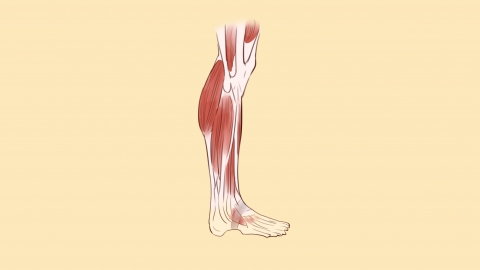What should I do if white pressure marks appear on my calf?
Generally, the appearance of white pressure marks on the lower leg may be related to factors such as skin elasticity phenomena, localized circulatory disturbances, lower extremity varicose veins, lymphedema, and nephrotic syndrome. Treatment options, under a doctor's guidance, may include general therapies and medication. Detailed explanations are as follows:

1. Skin Elasticity Phenomenon
When the skin of the lower leg is pressed, a temporary white mark may appear due to the elasticity of the skin and subcutaneous tissue. This is a normal reaction of the skin and subcutaneous tissue to pressure, similar to temporary paleness caused by finger pressure on the skin. In daily life, avoid prolonged standing or sitting to reduce blood congestion and edema in the lower legs, thus maintaining good elasticity of the skin and subcutaneous tissue.
2. Localized Circulatory Disturbances
When the lower leg is subjected to external pressure, such as from tight clothing or prolonged incorrect sitting posture, localized circulatory disturbances may occur, resulting in white pressure marks. This is caused by poor circulation and local tissue hypoxia. It is recommended to wear loose and comfortable clothing, avoid maintaining the same sitting posture for long periods, and regularly change positions to improve local blood circulation.
3. Lower Extremity Varicose Veins
Lower extremity varicose veins are usually caused by incompetent venous valves or weak venous walls, leading to poor venous return in the lower limbs. Blood congestion in the legs causes white pressure marks on the skin of the lower leg after pressing. Accompanying symptoms may include heaviness, swelling, discomfort, and pain in the lower limbs. Treatment may involve medications such as diosmin tablets, venoruton tablets, and sodium aescinate tablets, as directed by a physician.
4. Lymphedema
Lymphedema may result from surgery, parasites, trauma, or other causes leading to lymphatic obstruction or impaired lymphatic drainage. Lymphatic fluid accumulates in the leg, causing white pressure marks on the skin of the lower leg after pressing. Symptoms may also include thickened and rough skin. Treatment options, as recommended by a doctor, may include hydrochlorothiazide tablets, furosemide tablets, and spironolactone tablets.
5. Nephrotic Syndrome
Nephrotic syndrome may be caused by genetic, immune, infectious, drug-related, or environmental factors. Increased permeability of the glomerular filtration membrane leads to significant loss of plasma proteins, resulting in hypoalbuminemia, reduced plasma colloid osmotic pressure, and fluid leakage from blood vessels into interstitial spaces, causing the above-mentioned symptoms. Edema may also occur. Treatment options may include prednisone tablets, captopril tablets, torasemide tablets, and others, as directed by a physician.
In daily life, it is important to maintain moderate physical activity to promote blood circulation in the lower limbs. At the same time, avoid prolonged standing or sitting and regularly change positions.






